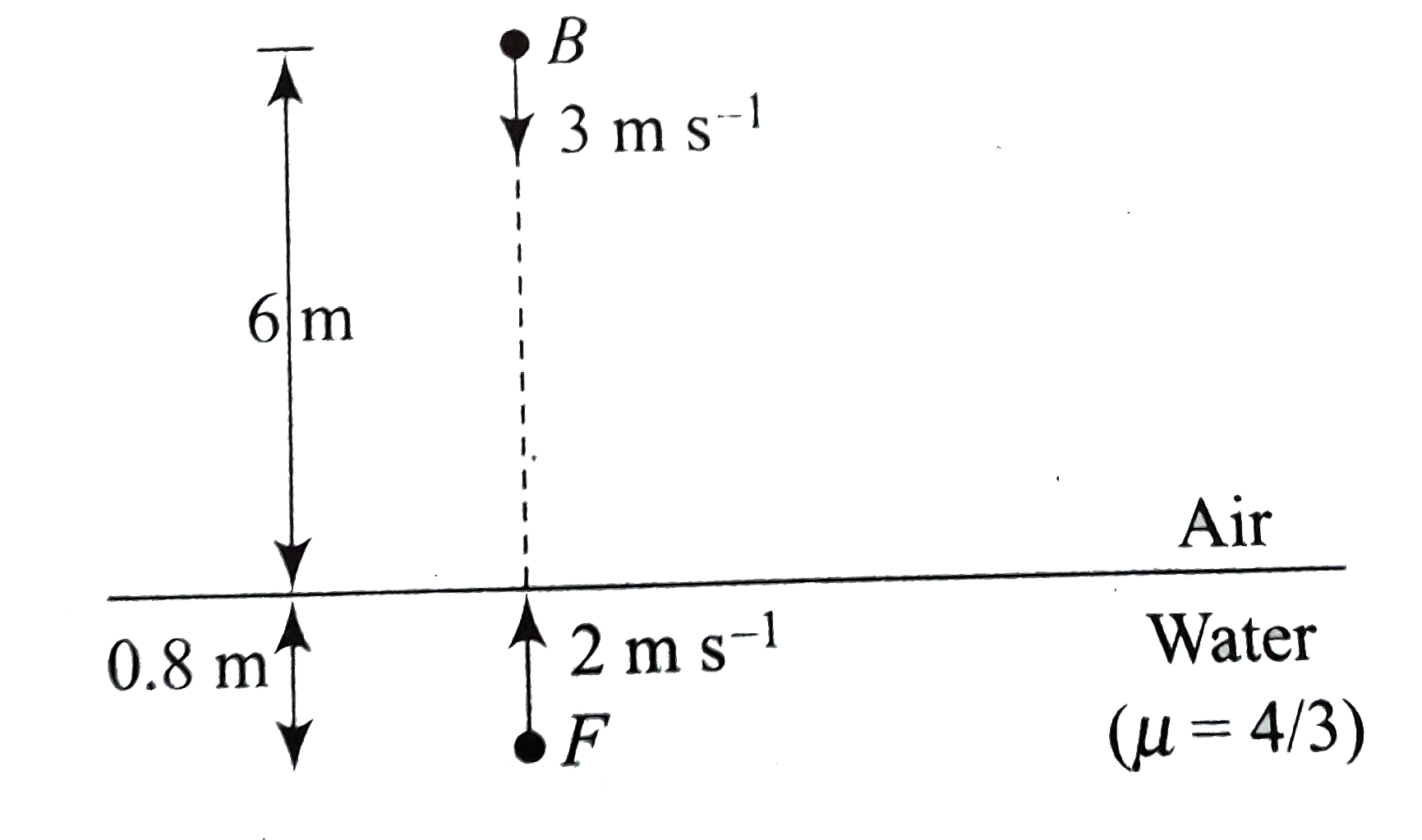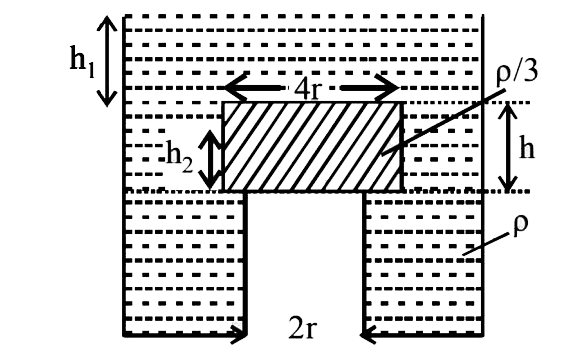Water moves up against gravity and even for a tree of 20mheight the tip receives water within two hours . The most important physiological phenomenon which is responsible for the upward movement of water is ______
Step-by-Step Solution:
1. Understanding the Question: The question asks about the physiological phenomenon responsible for the upward movement of water in trees, particularly in the context of a tree that is 20 meters tall.
2. Identifying the Mechanism: The key mechanism that facilitates the movement of water against gravity in plants is known as "transpirational pull." This process is crucial for water transport from the roots to the leaves.
3. Role of Transpiration: Transpiration occurs when water evaporates from the stomata (tiny openings) on the leaves. This loss of water creates a negative pressure (or tension) in the leaf, which pulls more water upward from the roots through the xylem vessels.
4. Pressure Gradient Creation: As water evaporates from the leaf surface, it creates a pressure gradient between the atmosphere and the internal spaces of the leaf (sub-stomatal cavity and intercellular spaces). This gradient is essential for the movement of water.
5. Movement Through Xylem: The xylem vessels, which are specialized for water transport, carry the water upward in a continuous column. The cohesive properties of water molecules (due to hydrogen bonding) help maintain this column of water.
6. Distance and Efficiency: The transpirational pull is powerful enough to lift water to significant heights, even up to 130 meters in some cases. In the case of a 20-meter tree, this process allows the tip of the tree to receive water quickly, often within a couple of hours.
7. Conclusion: Therefore, the most important physiological phenomenon responsible for the upward movement of water in plants is "transpirational pull."
Final Answer: "Transpirational pull"
---
Topper's Solved these Questions
- TRANSPORT IN PLANTSBOOK - NCERT EXEMPLAR ENGLISHCHAPTER - TRANSPORT IN PLANTSEXERCISE - Short Answer Type Questions
25 Videos
- TRANSPORT IN PLANTSBOOK - NCERT EXEMPLAR ENGLISHCHAPTER - TRANSPORT IN PLANTSEXERCISE - Long Answer Type Questions
7 Videos
- TRANSPORT IN PLANTSBOOK - NCERT EXEMPLAR ENGLISHCHAPTER - TRANSPORT IN PLANTSEXERCISE - Long Answer Type Questions
7 Videos
- THE LIVING WORLDBOOK - NCERT EXEMPLAR ENGLISHCHAPTER - THE LIVING WORLDEXERCISE - Long Answer Type Questions
10 Videos
Similar Questions
Knowledge Check
Which of the following forces is responsible for moving water up to the tops of the tallest trees?
AAtmospheric pressureBRoot pressureCGuttationDTarspration
Fluids at rest exert a normal force to the walls of the container or to the sruface of the body immersed in the fluid. The pressure exerted by this force at a point inside the liqid is the sum of atmospheric pressure and a factor which depends on the density of the liquid, the acceleration due to gravity and the height of the liquid, above that point. The upthrust acting on a body immersed in a stationary liquid is the net force acting on the body in the upward direction. A number of phenomenon of liquids in motion can be explain by Bernoulli's theorem which relates the pressure, flow speed and height for flow of an ideal incompressible fluid.
A container of large uniform corss sectional area. A resting on a horizontal surface holds two immiscible, non viscous and incompressile liquids of densities d and 2d, each of height H/2 as shown in the figure. The lower density liquid is open to the atmosphere having pressure P0.
Situation II:
A cyliner is removed and the original arrangement is restoreed.A tiny hole of area s(s<<A) is punched on the veritical side of the containier at a height h(h<H/2)
The height hm at which the hole should be punched so that the liquid travels the maximum distance is
View SolutionFluids at rest exert a normal force to the walls of the container or to the sruface of the ody immersed in the fluid. The pressure exerted by this force at a point inside the liqid is the sum of atmospheric pressure and a factor which depends on the density of the liquid, the acceleration due to gravity and the height of the liquid, above that point. The upthrust acting on a body immersed in a stationary liquid is the net force acting on the body in the upward direction. A number of phenomenon of liquids in motion can be explain by Bernoulli's theorem which relates the pressure, flow speed and height for flow of an ideal incompressible fluid.
A container of large uniform corss sectional area. A resting on a horizontal surface holds two immiscible, non viscous and incompressile liquids of densities d and 2d, each of height H/2 as shown in the figure. The lower density liquid is open to the atmosphere having pressure P0.
Situation II:
A cyliner is removed and the original arrangement is restoreed.A tiny hole of area s(s<<A) is punched on the veritical side of the container at a height h(h<H/2)
The maximum distance travelled xm is
View SolutionA container contains water up to a height of 20 cm and there is a point source at the centre of the bottom of the container. A rubber ring of radius r floats centrally on the water. The ceiling of the room is 2.0 m above the water surface. (a) Find the radius of the shadow of the ring formed on the ceiling if r = 15 cm. (b) Find the maximum value of r for which the shadow of the ring is formed on the ceiling. Refractive index of water =4/3.
View SolutionA tube of conical bore is dipped into water with apex upwards. The length of the tube is 20cm and radii at the upper and lower ends are 0.1 and 0.3 cm. Find the height to which the liquid rises in the tube ( Surface tension of water = 80 dyne / cm ).
View SolutionA fish F, in the pond is at a depth of 0.8m from the water surface and is moving vertically upward with velocity 2ms−1. At the same instant, a bird B is at a height of 6m from the water surface and is moving downward with velocity 3ms−1. At this instant. both are on the same vertical line as shown in figure . Which of the following statements are correct?

View SolutionA cylindrical tank has a hole of diameter 2r in its bottom. The hole is covered wooden cylindrical block of diameter 4r, height h and density ρ/3.

Situation I: Initially, the tank is filled with water of density ρ to a height such that the height of water above the top of the block is h1 (measured from the top of the block).
Situation II: The water is removed from the tank to a height h2 (measured from the bottom of the block), as shown in the figure. The height h2 is smaller than h (height of the block) and thus the block is exposed to the atmosphere.
Find the minimum value of height h1 (in situation 1), for which the block just starts to move up?
View SolutionA cylindrical tank has a hole of diameter 2r in its bottom. The hole is covered wooden cylindrical block of diameter 4r, height h and density ρ/3.

Situation I: Initially, the tank is filled with water of density ρ to a height such that the height of water above the top of the block is h1 (measured from the top of the block).
Situation II: The water is removed from the tank to a height h2 (measured from the bottom of the block), as shown in the figure. The height h2 is smaller than h (height of the block) and thus the block is exposed to the atmosphere.
Find the minimum value of height h1 (in situation 1), for which the block just starts to move up?
View Solution
